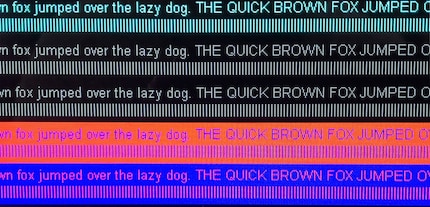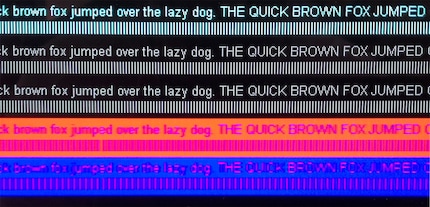
Background information
LGs 2020 UHD TVs don’t support full HDMI 2.1 and it doesn’t really matter
by Luca Fontana

LG wants to conquer the gaming market with its OLED televisions. They can even be used as PC monitors for owners of Nvidia's RTX-30 graphics cards. However, some tech portals are reporting problems with compatibility. A fix is close at hand – hopefully.
TV manufacturer LG knows how to appeal to gamers. Nobody does this better than our favourite South Korean tech giant. And since graphics card manufacturer Nvidia introduced its new next-gen graphics cards in early September, things have become even more colourful.
The best of the best when it comes to gaming TVs. This could even apply to anyone buying next-gen game consoles from Sony and Microsoft.
Well, the new Nvidia graphics cards are finally here – and tech portals are already reporting compatibility problems. LG's worst nightmare. So much for full support. LG is remaining calm, claiming that they've already worked out a solution. To be released... sometime soon.
According to Forbes journalist and tech expert John Archer,, 2019 and 2020 LG OLED models are causing these problems.
More precisely: owners of the 2019 and 2020 OLED models are reporting complete image loss – i.e. a black screen – when activating Nvidia G-Sync at 120Hz. This seems to be happening regardless of the selected bitrate – be it SDR, HDR10 or Dolby Vision.
Owners of the 2020 OLED models also report that colour scanning at 120Hz is scaled down from 4:4:4 to 4:2:2. This process is called colour subsampling.
Simply put, video signals contain two types of information. Brightness and colour. Or luminance and chrominance. The human eye can perceive differences in brightness much better than differences in colour. As a result, halving the colour information in the image signal has little effect on the perceived image quality. To reduce the data size of video signals, during streams for example, the colour sampling is scaled down from 4:4:4 to 4:2:2.
Doesn't sound so bad. The only thing is, 4:4:4 colour scanning at 120Hz is one of many HDMI 2.1 features that LG says it wants to «fully» support. And the reduced image quality isn't quite as invisible. Colour subsampling is particularly noticeable with text on a monochrome background. For example, on a white background these lines would look more blurred with 4:2:2 colour scanning than with 4:4:4.
This is what text looks like with 4:4:4 colour scanning:
And this is 4:2:2 colour scanning:
So if you only use your OLED for watching TV, you'll hardly notice the difference between 4:4:4 and 4:2:2. But if you buy a 2020 LG OLED TV as a monitor and switch back and forth between 120Hz and 60Hz in the Windows settings, you definitely will.
The compatibility problems are annoying. Especially since LG and Nvidia have been collaborating for months. After all, LG received a G-Sync certification last September as the first and so far only TV manufacturer.
In addition to this, let's harken back to what was said by Matt Wuebblings, Vice President of Global GeForce Marketing, on the occasion of the presentation of LG's new 8K OLED TVs:
Gamers will be blown away by the performance on these TVs when playing the latest 8K PC games featuring the most realistic ray-tracing and cutting-edge AI features powered by the GeForce RTX 3090 GPU.
Truly the apex of honesty. Followed by this disaster.
Archer is more critical of LG in terms of colour sub-scanning. In other words, the problem that only affects the 2020 LGs.
Last May, LG confirmed that its current UHD OLED models wouldn't support the full 48 Gigabit bandwidth of HDMI 2.1, but only 40 Gigabits per second. Their reasoning is that LG believes its intelligent picture and sound optimisations would achieve better results if computing power was taken away from the HDMI 2.1 port and allocated to AI functions instead.
So do the 2020 OLED models lack the bandwidth to achieve full colour scanning at 120 frames per second?
Perhaps. Although that may not be the reason. In the same statement, LG confirmed that their 2020 models would display UHD material at 120Hz and 4:4:4 colour scanning despite the reduced bandwidth. If the reduced bandwidth is still the cause for the colour subsampling, then something has gone wrong.
As annoying as the compatibility problems between Nvidia's RTX-30 graphics cards and LG's 2019 and 2020 OLED models are, there's still no reason to be alarmed. After all, even the articles on tech sites don't conclusively clarify whether all, many or only a few OLED televisions sold are actually affected.
Then there's the following LG statement:
LG has been made aware that some LG OLED TVs are experiencing certain compatibility issues with the recently launched Nvidia RTX 30 Series graphics card.
Notice the «some». And further:
An updated firmware has been in development with plans for a roll-out within the next few weeks to LG's 2020 and 2019 HDMI 2.1 capable TVs, which should address these incompatibility issues.
Sounds good. And it also puts the whole issue into perspective: televisions have long since ceased to be bullish monitors that only display image information. They're modern computers. Computing, processing and interacting with external hardware and software. With emerging technologies, this will inevitably lead to some issues that must be patched, at least initially. A new normal. We'll have to get used to it.
And firmware updates are today's Day 1 patches.
I write about technology as if it were cinema, and about films as if they were real life. Between bits and blockbusters, I’m after stories that move people, not just generate clicks. And yes – sometimes I listen to film scores louder than I probably should.
From the latest iPhone to the return of 80s fashion. The editorial team will help you make sense of it all.
Show allThere's talk of «a new standard for gaming-optimised picture and performance». LG claims to have launched the «world’s first 8K TVs» that support Nvidia's Geforce RTX-30 series. Looks like we're getting 8K at 60 frames per second, UHD at 120 frames per second, HDR, variable refresh rates, G-Sync, auto low latency mode and ray tracing.


At the beginning of his article, Forbes journalist John Archer says that the black screen problem with G-Sync enabled in 120Hz mode is probably not due to a faulty HDMI 2.1 interface on the television. The Nvidia graphics cards themselves are probably to blame. Or even current HDMI cables. Many support the data sets required by HDMI 2.1, but no cable manufacturer has yet received an official HDMI 2.1 certificate from the HDMI Association.